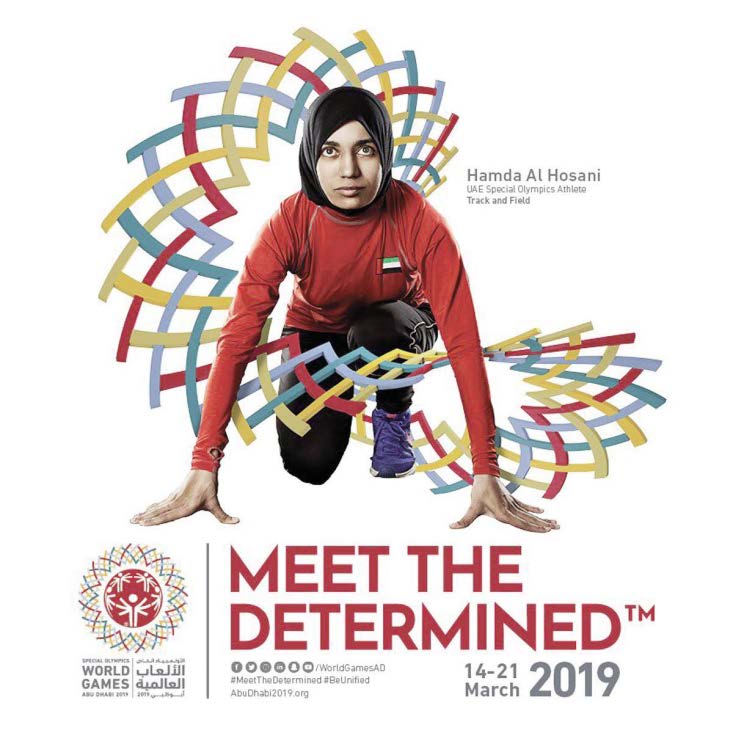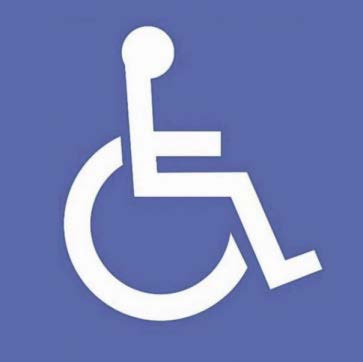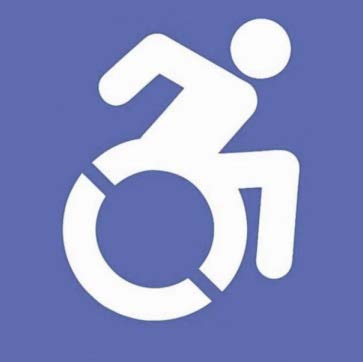AMERICAN ACADEMY OF DEVELOPMENTAL MEDICINE & DENTISTRY
The American Academy of Developmental Medicine and Dentistry (AADMD) was organized in 2002 to provide a forum for healthcare professionals who provide clinical care to people with neurodevelopmental disorders and intellectual disabilities (ND/ID). The mission of the organization is to improve the quality and assure the parity of healthcare for individuals with neurodevelopmental disorders and intellectual disabilities throughout the lifespan.
BY H. BARRY WALDMAN, DDS, MPH, PHD, STEVEN P. PERLMAN, DDS, MSCD, DHL (HON), RICK RADER, MD, DHL (HON) AND ALLEN WONG, DDS, EDD
INTRODUCTION
Neurolinguistics is the study of the neural mechanisms in the human brain that control the comprehension, production, and acquisition of language. From that discipline we understand that words, the currency of language, are powerful mediators of emotion, behavior and relationships. Words have been proposed, promoted, discouraged, weaponized, misplaced, eliminated, prohibited, copyrighted and hijacked.
The use of particular words has evolved over the years and may take on variations in their meanings than were once intended. For example, the single word "goodbye" evolved from the old English phrase, "God be with yee." Similarly, the reference to "individuals with intellectual difficulties" has undergone multiple variations in an effort to describe and not offend these individuals and their families. The following text carries this effort further to more realistically present "individuals with special needs" from a perspective which recognizes their efforts and those of their families to overcome multiple limitations.
ANCIENT AND MORE RECENT HISTORY
• 550 BC, an obscure document called The Therapeutic Papyrus of Thebes marks the first recorded reference to mental retardation.
• 335-280 BC, the physician Herophilus finds a connection between brain defects and disability.
• Physicians in the Dark Ages believed that mental retardation (and illness) were an imbalance of black bile.
• From ancient civilization through the medieval period, individuals with mental retardation were subject to infanticide or kept for the amusement of others.
• In 1792, Philippe Pinel became the chief physician at Bicetre, the Paris asylum for patients with mental illness, many of whom were also intellectually impaired. Patients were chained to the walls – many were restrained for 30 to 40 years; treated like beasts and put on public display; viewers paid admission to see them. He removed the chains, ushering in a new era of humane treatment.
• The term "stupidity" was coined by the 17th century physician Thomas Willis.
• From stupid, we eventually graduated to moron, imbecile, feeble-minded, mentally-deficient, funny-looking kids, retarded and our latest iteration "intellectually disabled."
• Eugenics was the American social movement that promoted the qualities of the human species by prohibiting reproduction by persons having genetic defects or presumed to have undesirable traits. Forced sterilizations were carried out to this end. It was supported by prominent persons, including Woodrow Wilson, Winston Churchill and Adolf Hitler.
• In 1927, the U.S. Supreme Court upheld the ruling that with a feebleminded woman, the interests of the states in a "pure" gene pool outweighed the interests of individuals. Supreme Court Justice Oliver Wendell Holmes said in the ruling, "Three generations of imbeciles is enough."
• Under the Nazi program from 1936 to 1941, physicians killed 275,000 patients "judged, incurably sick." The patients were people with intellectual disabilities.
• The 1972 expose of the Willowbrook Institution on Staten Island, New York with horrific neglect and abuse of residents was the beginning of the turning point for deinstitutionalization.1
NOT THAT LONG AGO
When we finally settled on the designation "mentally retarded children," we were embarrassed and somewhat ashamed to be related to such children. We placed them in institutions or in the back rooms of homes. There were special classes in public schools for them – never to be seen in "regular classes" and for that matter, seldom if ever, to be seen in public. After a while, the word "retarded" increasingly was referred to anyone (even a friend) who didn't understand something; "What are you, a retard?" The "R word" became just another "6 lettered dirty word." So, we modified our description to an "intellectually disabled (ID) child."
Once again, we realized that the child was more than just "another ID child." He/she was a child (like all others) who is characterized with many features and happened to be intellectually disabled. The youngster is now referred to as a "child with an intellectual disability." This approach caught on as we learned to describe individuals of all ages with varying conditions and all types of needed attention and care. They were now to be youngsters and the not so young ones with special needs. But the term "special needs" emphasizes the potential complex effort by a health practitioner to provide the necessary care; rather than something about the individuals to receive the care.
Recently we learned that in the United Arab Emirates, individuals with special needs are referred to as "people of determination." This tells us something about the character of the child and adult for
whom we will be providing care. It is a term that could not possibly be bastardized, compromised or dehumanized in the future. It is an idea that is equivalent of calling soldiers "brave or courageous." It points to their character.
SO WHAT IS DETERMINATION?
Anticipatory enthusiasm Psychologist's definition of determination: the positive emotion experienced while one anticipates acquiring and/or consuming some kind of reward. (One wishes that they use less complex words.) Determination is viewed as the way an individual perceives his or her situation and summons up their reserve, skills, emotions, behaviors and resources to achieve a goal. The goal is often seen as a challenge based on the individual's status in intelligence, stamina, physicality, expectations and history.
Anthropologists believe in cultural determinism which proposes that the culture in which the individual is raised determines who we are at emotional, psychological and behavioral levels. This is in contrast to both genetic determinism and environmental determinism. The former believes that biologically inherited traits impacts and influences an individual's determination. The latter believes that the physical world (which provides the life-altering conditions) is the criteria for navigating the determination pathway. Determination, or "self-determination" is probably engineered by a confluence of all of those forces. Archimedes, the Greek mathematician, inventor and astronomer provides us with what is exactly required to see the results of determination, "Give me a firm spot on which to stand, and I shall move the earth." Determination can achieve that, and more.

SUN FOR EVERYONE: In April 2017, the People of Determination term was launched in Dubai as part of a national strategy for empowering people with disabilities. Last year, the Dubai government also installed new signs on seven of the city's beaches.
DETERMINATION WITH COMPETITION ("NO ONE LOSES")
What is Special Olympics? In June 1962, Eunice Kennedy Shriver started a day camp called Camp Shriver for children with intellectual disabilities at her home in Potomac, Maryland. She started the camp because of her concern about children with intellectual disabilities having very little opportunity to participate in athletic events. Using Camp Shriver as an example, she as head of the Joseph P. Kennedy, Jr. Foundation and a member of President John F. Kennedy's Panel on Mental Retardation, promoted the concept of involvement in physical activity and other opportunities for people with intellectual disabilities. Camp Shriver became an annual event, and the Kennedy Foundation (of which Eunice became director in 1957) gave grants to universities, recreation departments and community centers to hold similar camps.
Special Olympics is a global inclusion movement using sport, health, education and leadership programs every day around the world to end discrimination against and empower people with intellectual disabilities. Founded in 1968, and celebrating its 50th Anniversary this year, the Special Olympics movement has grown to more than 5 million athletes and unified partners in more than 170 countries. With the support of more than 1 million coaches and volunteers, Special Olympics delivers 32 Olympic-type sports and over 108,000 games and competitions throughout the year.2 Disability is part of the human condition. Almost everyone will be temporarily or permanently impaired at some point in life, and those who survive to old age will experience increasing difficulties in functioning. Most extended families have a member with a disability, and many non-disabled people take responsibility for supporting and caring for their relatives and friends with disabilities. Every epoch has faced the moral and political issues of how best to include and support people with disabilities. This issue will become more acute as societies change and more people live to an old age.
Responses to disability have changed since 1970, prompted by self-organizations of people with disabilities and by the growing tendency to see disability as a human rights issue. Historically, people with disabilities had largely been provided through solutions that segregated them, such as residential institutions and special schools. Policy has now shifted towards community and educational inclusion, medically-focused solutions have given way to more interactive approaches recognizing that people are disabled by environmental factors as well as by their bodies.
Health also has been defined as a state of physical, mental and social well-being; not merely the absence of disease or infirmity. Determining factors include: living and working conditions, general social status, cultural and economic conditions and access to health care services.



NEVER DETERRED: New national policy in the UAE suggests that people with special needs or disabilities should be referred to as "people of determination" to recognise their achievements in different fields; the changes are evident in promotional pieces for the upcoming Special Olympics World Games in Abu Dhabi (above left). In a change from the traditional "handicapped" symbol (above right), the new "Modified International Symbol of Access," suggests determination, independence and engagement by focusing on the person rather than the wheelchair.
ACROSS THE WORLD
People with disabilities experience poorer health outcomes, achieve limited economic participation and have higher rates of poverty than people without disabilities. This is partly because people with disabilities experience barriers in accessing services that many of us have taken for granted, including health, education, employment and transportation as well as information. These difficulties are exacerbated in less advanced countries and in locales in the U.S.3
The limitations in securing needed health services for Special Olympics athletes (and the general population of individuals with determination) has been a long-acknowledged reality. Since 1994, the Special Olympics program has expanded its programs in sports competition to include a wide range of health education, service programs and referrals to local providers in eight specialties:
• Fit Feet (podiatry) • FUNfitness (physical therapy) • Health Promotion (better health and well-being) • Healthy Hearing (audiology) • MedFest (sports physical exam) • Special Olympics-Lions Clubs International Opening Eyes (vision) • Special Smiles (dentistry) • Strong Minds (emotional well-being)
In 2012, Special Olympics Health, made possible by the Golisano Foundation, launched a major initiative to build on the successful work of Healthy Athletes and increased access to inclusive heath year-round with a new program called Healthy Communities. With a goal of reaching 100 communities by 2020, Healthy Communities is now active in more than 80 communities in 50-plus countries on six continents. Partnerships created through Healthy Communities are leveraging the expertise and resources needed to reduce barriers to care and provide an opportunity to raise awareness, engage volunteers, train clinicians, and create a future where equal access to care is more than a mere goal. It is a reality.
In 2016, the Golisano Health Leadership Awards were created to recognize individuals and organizations that further the cause of Special Olympics and improve access to health care, fitness and wellness programs for people with intellectual disabilities. The awards are Special Olympics' highest honor for health partners.
LEGISLATION AND DETERMINATION
The Americans with Disabilities Act (ADA) became law in 1990. The ADA is a civil rights law that prohibits discrimination against individuals with disabilities in all areas of public life, including jobs, schools, transportation, and all public and private places that are open to the general public. The purpose of the law is to make sure that people with disabilities have the same rights and opportunities as everyone else.4
In 1999, the United States Supreme Court ruled in Olmstead v. L.C. that unjustified segregation of persons with disabilities constitutes discrimination in violation of title II of the Americans with Disabilities Act. The Court held that public entities must provide community-based services to persons with disabilities when: (1) such services are appropriate; (2) the affected persons do not oppose community-based treatment; and (3) community-based services can be reasonably accommodated, taking into account the resources available to the public entity and the needs of others who are receiving disability services from the entity.5
Legislation, court rulings and general change in societal mores have modified and improved the potential for youngsters with determination in community schools and adults with determination in the working world – unfortunately, far from total acceptance.
But never underestimate the determination and outcome of the efforts by children and adults with constraints – whose lives and ability astound us all! •
ABOUT THE AUTHORS:
H. Barry Waldman, DDS, MPH, PhD is a SUNY Distinguished Teaching Professor, Department of General Dentistry, Stony Brook University, NY. E-mail: h.waldman@stonybrook.edu Steven P. Perlman, DDS, MScD, DHL (Hon) is the Global Clinical Director and founder, Special Olympics, Special Smiles and Clinical Professor of Pediatric Dentistry, The Boston University Goldman School of Dental Medicine. Rick Rader, MD, DHL (Hon) is the Director of Morton J. Kent Habilitation Center, Orange Grove, Chattanooga, TN; Senior VP Public Policy, American Academy of Developmental Medicine and Dentistry; Adj. Professor, Human Development, Univ. of Tennessee-Chattanooga. He is Exceptional Parent Magazine's Editor in Chief. Allen Wong, DDS, EdD is Professor, University of the Pacific, Arthur A. Dugoni School of Dentistry, San Francisco CA; and Global Clinical Advisor, Special Olympics, Special Smiles.
References
1. American Academy of Developmental Medicine and Dentistry. The legacy and the lessons: The AADMD and invitation to care. 2. Special Olympics to "Light Up" the Globe to Celebrate Inclusion Revolution Available from: specialolympics.org/Press/2018/Light_Up_the_Globe_to_Celebrate_ Inclusion_Revolution.aspx Accessed July 22, 2018. 3. World Health Organization and World Bank. World Report on Disability. WHO Library Cataloguing-in-Publication data. Available from: who.int/disabilities/world_report2011/en Accessed July 21, 2018. 4. ADA National Network. What is the Americans with Disabilities Act? Available from: adata.org/learn-about-ada Accessed September 10, 2018. 5. ADA.gov Information and technical assistance on the ADA. Olmstead ruling. Available from: ttps://www.ada.gov/olmstead/olmstead_about.htm Accessed September 10, 2018.